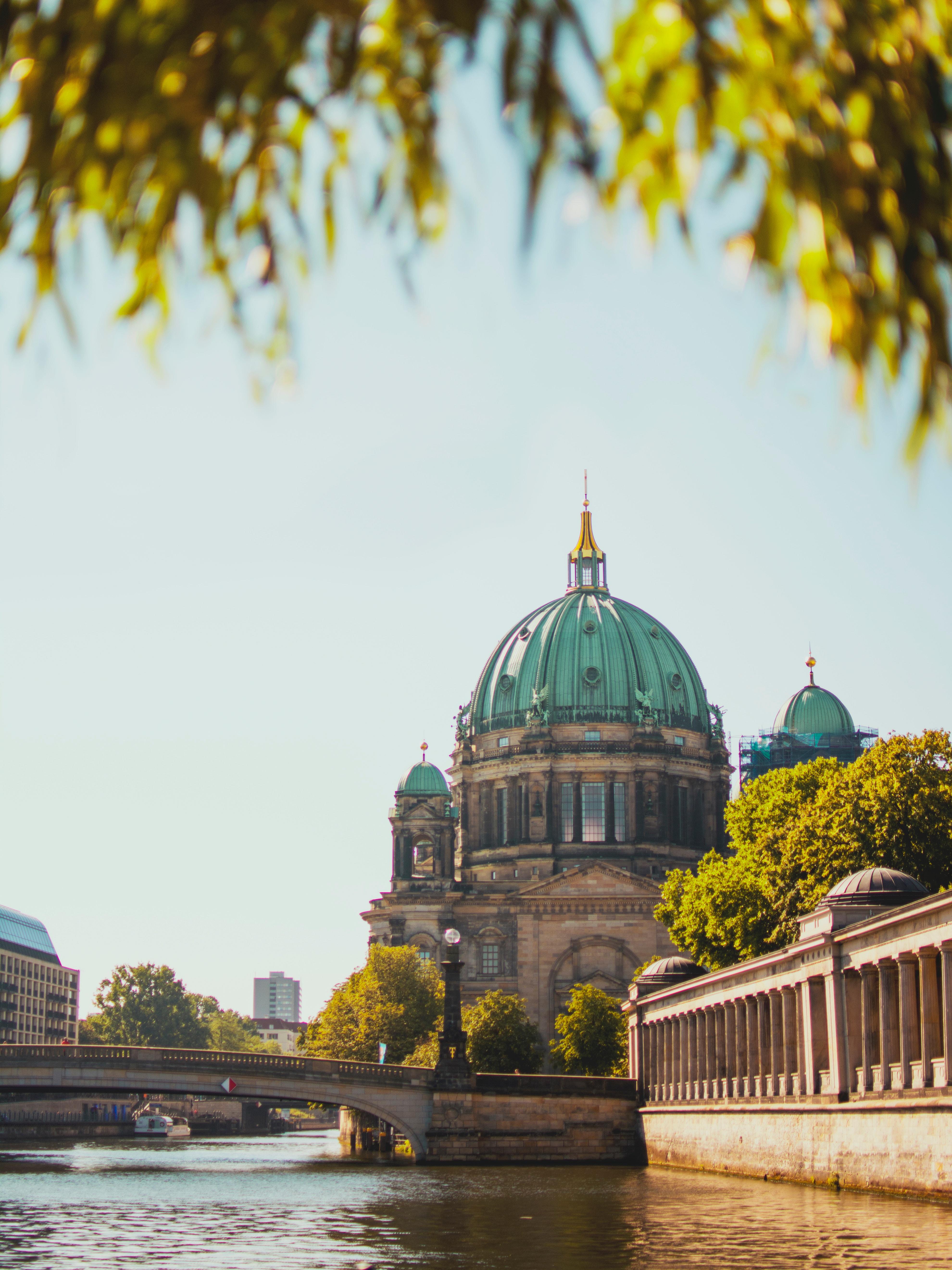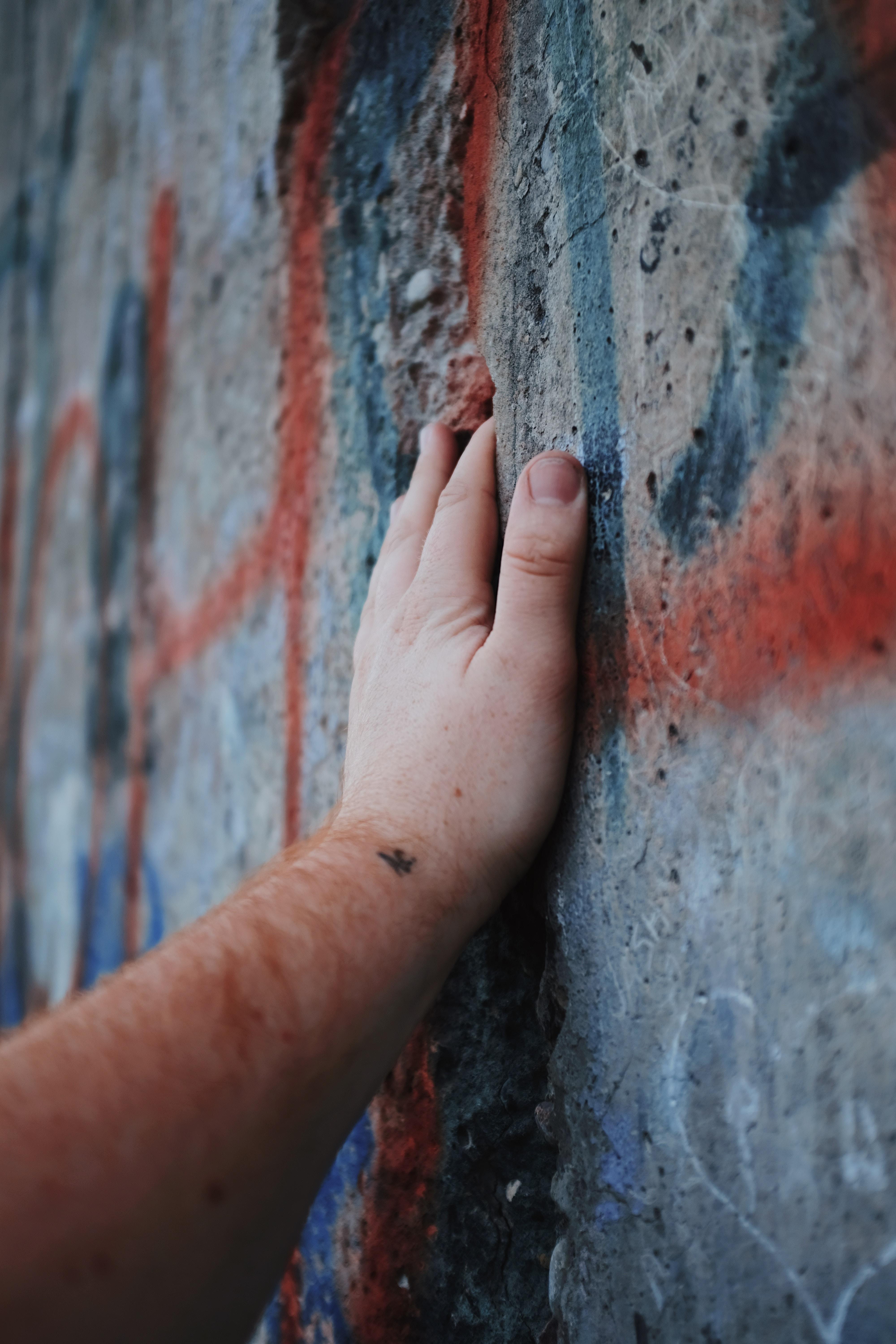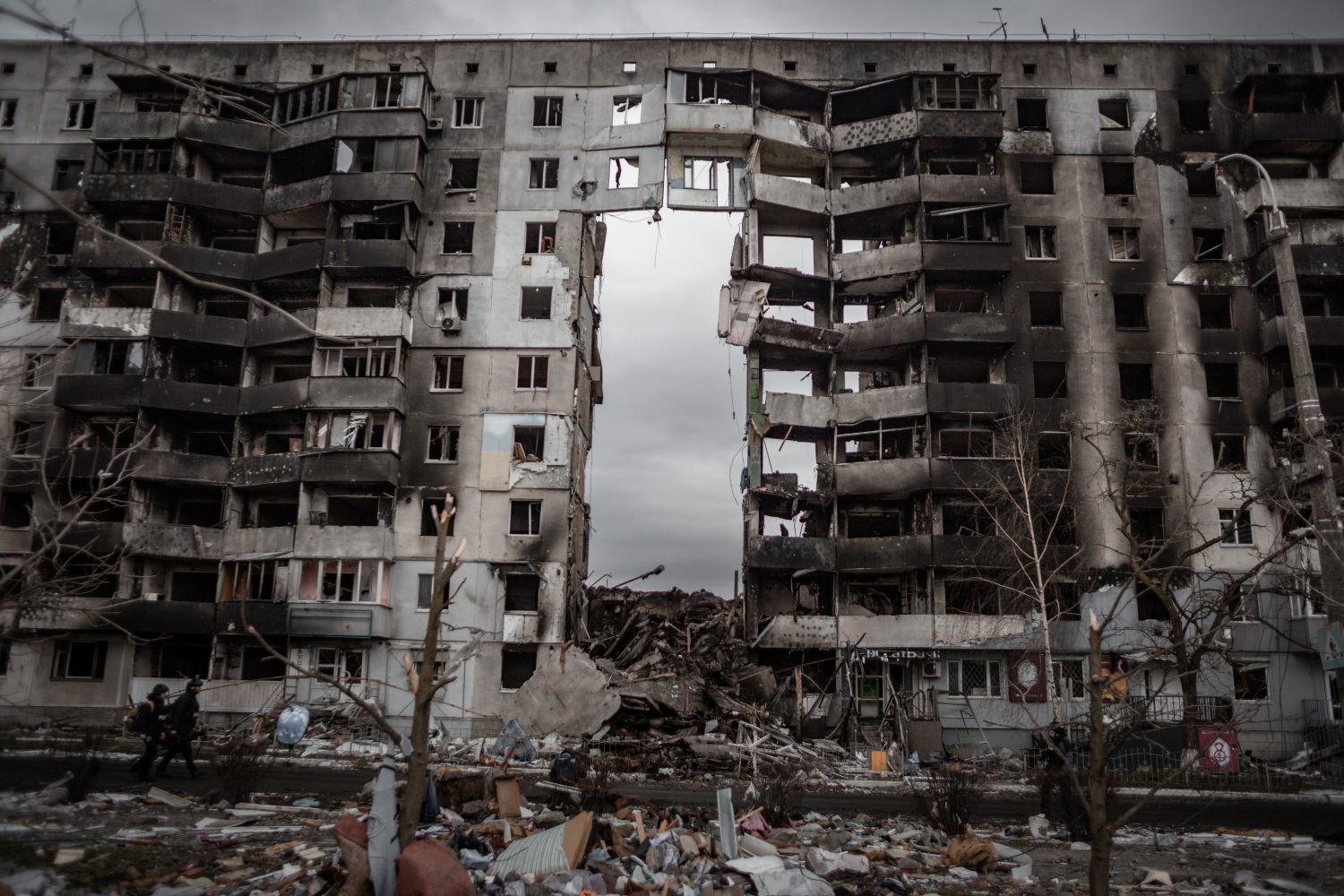The fall of the Berlin Wall, an event that forever marked the year 1989 - although not for the whole world - marked the beginning of German reunification as well as the beginning of the fall of the Iron Curtain. German history and culture have been forever marked by the Kingdom of Prussia, the Treaty of Versailles, Westphalia, the Holy Roman Empire, the Brandenburg Gate and the Reichstag.
There is no more defining moment in modern German history than the fall of this wall. While the fall of the Berlin Wall is generally associated, in history lessons, with the Cold War – understanding it cannot be done without discussing the German Democratic Republic, or GDR, East and West Germany, the Weimar Republic and the destructive German Reich of the Nazis.
While planning out your stay in Berlin can be as simple as finding a place to live or rent, you also might be interested in the city's history. Understand more about one of the most important monuments in the capital of Germany in this historical guide.


Construction of the Berlin Wall (1961)
In the tense backdrop of Cold War rivalries, the construction of the Berlin Wall in 1961 marked a pivotal moment in history. Spearheaded by East German leader Walter Ulbricht, this abrupt and clandestine act aimed to stem the mass defection of citizens to the democratic West.
Under the directive of the Soviet Union, the barrier's hasty creation symbolized the ideological struggle for control. In this part of the article, we shall discuss significant events regarding the building of the Berlin Wall.
Unveiling the Motives: Walter Ulbricht's Role and Ideological Imperatives
Walter Ulbricht, the central figure behind the construction of the Wall, was crucial in executing the East German government's vision. Driven by a staunch commitment to socialism and fearing the influence of the West, Ulbricht sought to fortify East Germany's borders.
The Overnight Transformation: from Barbed Wire to Concrete
Following Ulbricht's intentions, the construction unfolded astonishingly, catching Berliners and the international community off guard. What began as barbed wire hastily strung across the city morphed into a formidable concrete barrier with watchtowers and armed guards.
Human Stories Amidst Concrete Walls: Impact on Families and Daily Life
As the Wall rose, families were abruptly separated, and daily life for Berliners was irrevocably altered. This subsection explores the human stories behind the concrete walls, capturing the emotional toll of divided families and the resilience of those navigating the challenges of life in a city cleaved in two.
The Geopolitical Divide Post-World War II
Whether you ask someone from Bremen, Hamburg, or Regensburg, or from the Rhine River to Zeugspitze, any German will most likely recognize the date 8 of May 1945. A moment that those living in Germany will remember well, this day marked the final end of institutional Nazism in Europe.
It was accomplished by two countries that would become the competing superpowers of the world in the years to come: the United States and the USSR. Attempting to get rid of the final vestiges of Fascism, from the Reichstag building to the Berlin palace, Berlin city was divided into 4 zones occupied by the US, Great Britain, France and the USSR.
The zones occupied by the first three countries formed what became known as West Berlin, while the zone occupied by the USSR is known as East Berlin. In 1946, Churchill made a speech in which he notoriously declared that an “iron curtain” had fallen over Europe, dividing the continent into two powers that divided Germany into Eastern Germany, known as the German Democratic Republic, and Western Germany, called the Federal Republic of Germany.

Looking at a map of Germany at the time, the distinctions between Southern and Northern Germany take the backseat as the population of Germany belonging to the East German government fell behind this “iron curtain.” Tensions in Berlin, which became the official German capital after 1990, were especially emblematic of the fight between Capitalist and Communist ideologies.
What was once hailed as an important city for the German Reich and German national pride and culture became the centre of the first incident of the Cold War, known as the Berlin Blockade, in 1948. From 1949 to 1961, the USSR and East Germany faced a major problem: East Berliners fleeing from the DGR to the FGR or from East to West – the number estimated at about 3 million German people. Are you in the western part of our country? Find German courses Vancouver easily.
Life Behind the Wall: Daily Realities (1961-1989)
The construction of the Berlin Wall in 1961 cast a long shadow over the daily lives of those on both sides. This section delves into the profound impact on individuals, families, and communities as they navigated the realities of a divided city for nearly three decades.
Navigating Daily Existence: Struggles of Separation and Coping Mechanisms
This section focuses on the struggles of families divided by the Wall and the various coping mechanisms they devised to maintain connections in the face of adversity. Separated by concrete and ideology, families faced the harsh reality of living in a torn city. The emotional toll of separation and the challenges of restricted movement created a poignant tapestry of human experiences.
East and West: Divergent Realities
Speaking of life behind the wall, this article examines the stark disparities in lifestyles and opportunities, underscoring the profound impact of the wall on the socio-economic fabric of Berlin.
Life on either side of the Wall diverged significantly. In the East, citizens contended with a restrictive political regime, limited freedoms, and economic struggles. Meanwhile, the West thrived in a democratic environment, enjoying greater personal liberties and economic prosperity.
Under the Watchful Eyes: Surveillance and Control: Stasi's Presence in East Germany
This piece cannot be complete without exploring the pervasive presence of the Stasi, its methods of surveillance, and its impact on individual privacy. The East German Stasi was crucial in maintaining control of the Wall, especially its extensive surveillance apparatus. The ever-watchful eyes of the Stasi intensified the climate of fear, further emphasising the daily challenges faced by those living in East Germany.
Cultural Resilience: Art, Music, and Secret Solidarity
Despite the oppressive atmosphere, a vibrant undercurrent of cultural resilience emerged. From clandestine art installations to subversive music, Berliners found creative ways to express dissent and maintain a sense of solidarity.

The Iron Curtain and the Berlin Wall
The beginning of the physical separation between the two German states began with the Warsaw Pact in 1955, which created a military alliance between the states that formed part of the Soviet bloc:
- The USSR
- Bulgaria
- Hungary
- East German GDR
- Poland
- Albania
- Czechoslovakia
- Yugoslavia
The Eastern Bloc, in direct opposition to the Western one, adopted a communist regime and responded as an ally to the USSR in all political and military decisions. In November of 1958, an ultimatum launched by the Soviets in question to the situation in Germany, now known as the Khrushchev ultimatum, put Berlin into a second crisis. When no agreement was reached, a division was wrought in Berlin like no other city in any country in Europe: the Berlin Wall.
Built-in 1961, the wall was meant to physically separate the territories in eastern and western Berlin. The wall lasted for longer than many anticipated: 28 years, during which the migration between the two was forbidden. It marked a time in Germany when many families were forcefully separated.
While the wall symbolized a hard-line policy against migration, it also symbolized a distinct ideological division. Whether you study in Germany, want to know more about the city, or are interested in the history of the Berlin Wall, it is often said that the wall was erected in a single night.
This is actually only partially true – in reality, only barbed wire and brick walls were mounted rapidly along the border, while the actual wall as we know it today was completed in a much longer time frame. However, by 1962, the wall was 15 kilometres long. Find German courses in Toronto in the easiest way possible: with Superprof!

Life Behind Each Side of the Wall
While modern-day visits to Germany are now perceived to be made up entirely of German beer, the Grimm brothers, visiting famous monuments like the Cologne Cathedral or struggling to understand a language that used to have earned many prizes for the longest word – understanding the country’s complex history is a favourite amongst tourists.
A city now known for its famous composers, powerful German companies, and a particularly delicious jelly doughnut was actually the site of much distress and cruelty on both sides of the Berlin Wall. The wall quickly became a symbol of hate and saw the largest population of defectors leave East Germany in the first few months of its creation.
Those who opposed the wall by trying to leave or by critiquing it were silenced by the GDR, being either killed or condemned to life in prison. It is estimated that 5,000 successful passages were made into West Germany, while 80 passages involved deaths and 115 included injuries by bullets fired by the border guards.
Critical Political Figures and Decisions (1961-1989)
Influence and Machinations: Shaping the Destiny of the Berlin Wall
The Berlin Wall's history is intricately woven with the decisions and actions of key political figures during the Cold War era. This section unravels the political landscape, highlighting pivotal moments and influential figures that shaped the destiny of the Wall.
Walter Ulbricht's Authority: Architect of Division in East Germany
Ulbricht's authority will always be mentioned, examining how his political influence and unwavering commitment to socialism contributed to the decision to build the Wall. Walter Ulbricht, General Secretary of the Socialist Unity Party, played a central role in the construction of the Wall.
Kennedy's Response
The construction of the Wall posed a significant challenge for U.S. President John F. Kennedy. Kennedy's response to the crisis was diplomatic and strategic and aimed at addressing Berlin's sudden and provocative division.
Willy Brandt's Ostpolitik
This part analyses Brandt's diplomatic efforts, including his visit to East Germany, and their impact on the dynamics surrounding the Berlin Wall. Exploring the shift towards détente and the gradual thawing of Cold War tensions, Willy Brandt, West German Chancellor, implemented an Ostpolitik policy to improve relations with Eastern Bloc countries.
Reagan's Challenge
Here, we will consider Reagan's aggressive approach, including his famous "Tear down this Wall!" speech. Reagan employed rhetorical strategies and resonance in the broader context of Cold War politics.
During Ronald Reagan's presidency, the Berlin Wall became a symbolic battleground in the ideological conflict between East and West.
Gorbachev's Unintended Impact
Another event worthy of mention is Gorbachev's reforms, their impact on East-West relations, and their role in the events leading to the Wall's eventual fall in 1989. Mikhail Gorbachev's policies of perestroika and glasnost inadvertently contributed to the unravelling of the Berlin Wall.
The Fall of the Berlin Wall and the End of the Cold War
From the 1970s and onwards, the policy was called Ostpolitik. This policy allowed for a decrease in tensions and the relationship between the Western bloc and the Soviet bloc. It wasn’t until 1987, however, that the tide seemed to be changing, marked by Mikhail Gorbatchev’s visit to the German Democratic Republic.
This visit was largely a signal towards a new, more open political atmosphere. In 1989, following the advice of GDR ministers, following this type of policy and many protests from the German population in the east, the government decided to open the frontier and take down the Berlin Wall.
The 9th of November of that year saw the demolition of the Berlin Wall, to the joy of Berliners on both sides. One interesting fact to point out actually has to do with the condition of the wall before its destruction. Meanwhile, the east side of the wall was, on the whole, kept pristine.
The same could not be said of the west side of the wall. The west side was filled with graffiti tags, designs and inscriptions. While this serves to show the differing atmospheres on both sides of the wall, it also shows how heavily protected and inaccessible the east side of the wall was to its citizens.

The reunification of Germany was produced in 1990. While this can sometimes seem like ancient history, it is important to remember, no matter what side your country was on, that some people are still living through the consequences of this important moment in history.
Legacy of the Berlin Wall: Impact on Germany and Beyond
The fall of the Berlin Wall in 1989 marked the end of a physical barrier and the beginning of a profound reconfiguration in global politics. This section delves into the enduring impact of the Wall's legacy on Germany and its implications for the broader geopolitical landscape.
Reunification of Germany
The reunification process unfolded rapidly following the Wall's fall. East and West Germany officially reunified on October 3, 1990, signalling the end of decades of division. This historic event brought about political, economic, and social integration, but it also posed challenges as the two sides reconciled differences in governance, economy, and societal norms.
Economic Challenges and Integration
The economic implications of reunification were substantial. East Germany faced the daunting task of integrating into the prosperous West German economy. While significant progress was made, disparities persisted, and the transformation posed hardships for some in the East. This economic integration became a central theme in the broader narrative of post-Cold War Europe.
Shifts in European Dynamics
The reunification of Germany had broader implications for European dynamics. The geopolitical landscape of the continent transformed, with a unified Germany assuming a central role. This shift influenced European Union dynamics and contributed to a new era of cooperation and challenges as the continent adjusted to the redefined balance of power.
Symbolic Significance
The Berlin Wall's remnants became symbolic artefacts, a poignant reminder of division and unity. Sections of the Wall were preserved as memorials, museums, and public artworks. The east side gallery, featuring murals by international artists, stands as a testament to the wall's symbolic significance and the enduring human spirit that triumphed over division.

Global Impact on Diplomacy
The fall of the Berlin Wall reverberated far beyond German borders. It marked a symbolic end to the Cold War and prompted shifts in global diplomacy. The United States and the Soviet Union engaged in a new era of relations, and the geopolitical map of Eastern Europe underwent significant transformations as nations sought to redefine their identities and affiliations.
Lessons for Contemporary Challenges
The legacy of the Berlin Wall offers valuable lessons for addressing contemporary challenges. The Wall's fall exemplifies the power of diplomacy, international cooperation, and the resilience of human aspirations for freedom. These lessons remain relevant in an era marked by geopolitical tensions, emphasizing the importance of dialogue and understanding in overcoming division.
While the will and spirit of unification in Germany were joyful, it has also served as a painful reminder of one of the most difficult episodes in German history. Today, the majority of the wall has disappeared. However, there are still some remains that can be seen both in order to experience history as well as to serve as a reminder against the dangerous politics the generation before us engaged in.
Today, Berlin is more than just its past – the modern city is home to some of the most interesting cultural and social activities in the world. The city, first documented in the 13th century, is home to orchestras, universities and venues. In fact, the city is one of the world’s most important hubs for film, music and the arts.
According to some sources, it is estimated that there have now been over 6,000 films shot in Berlin alone. Not only does Berlin play an important role in the creative arts, it is also one of Germany’s most important financial hubs. Looking at the economy of Berlin, it has the 4th largest GDP of any city in the world.
That being said, the cost of living is relatively cheap - depending on where you're from, of course. If you're in Berlin for a short stay, you'll also be contributing to the city's economy in an unexpected way. Some economic research conducted for 2018 showed that tourism, specifically Berlin's nightlife, brought an estimated 1.3 billion pounds in revenue. Don't feel left out of the adventure! Find your German classes Edmonton and start learning German today.
















